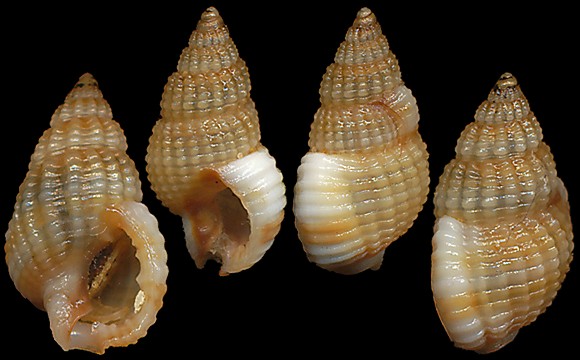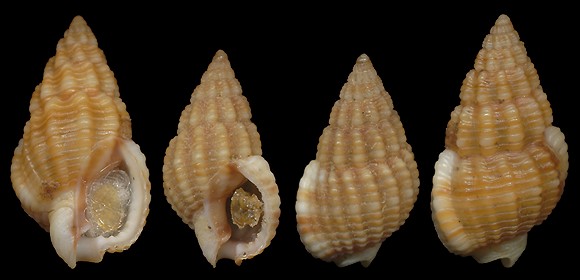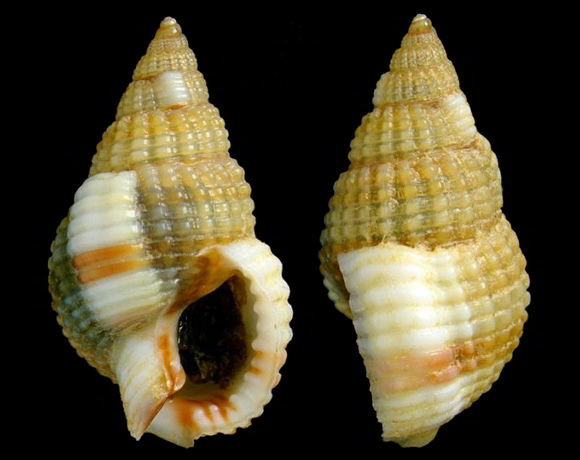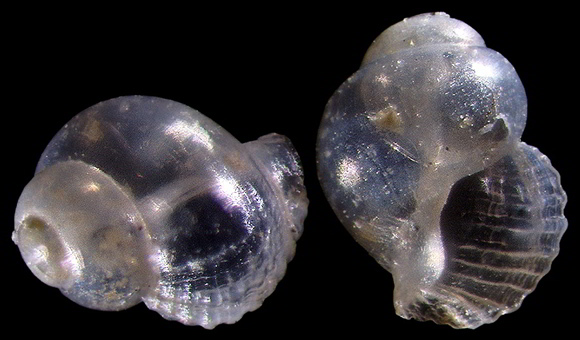
Original taxon: Tritonia varicosa.
Trawled at 20-30m deep, Málaga, Andalucia, Spain. 8-8mm.

Trawled at 25-50m deep, off Málaga. 9,5mm.

Turton described the species after northern specimens, which are usually paler than those from Mediterranean: « Shell conic, whitish with rufous marks, with two or three white varices. Volutions seven, flattish and decussate. Aperture purple, toothed on each side. Pillar white externally. Length six-tenths of an inch; breadth four-tenths. » – W. Turton: “Description of some new British shells”, Zoological Journal vol. 2, january 1825 - april 1826, London 1826, p.365.
10-15m deep, on soft bottom, La Goulette, N. Tunisia. 8,9mm.
Original pictures provided by M. Antit for WoRMS.
– (CC BY-NC-SA) –


Original pictures provided by A. Nappo (IT).
– (CC BY-NC-SA) –

Original pictures provided by N. Lete (HR).
– (CC BY-NC-SA) –
